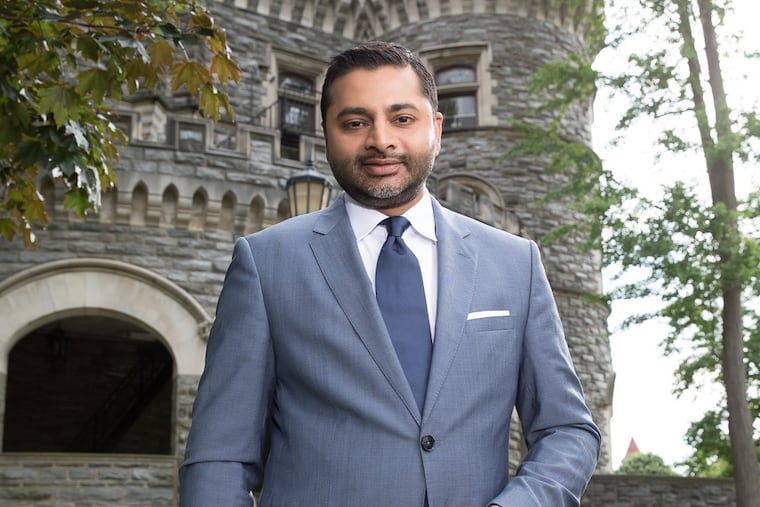Higher education must close its leadership diversity gap | Opinion
As colleges' student bodies' grow more diverse, why isn't the same happening with their leaders and professors?

Vanguard declared last week in its stewardship report that the mutual fund company was “expanding [its] focus to more explicitly urge boards to seek greater diversity across a wide range of personal characteristics, such as gender, race, ethnicity, national origin, and age.”
Their announcement reminded me of how colleges and universities across the country must do the same.
To be among the first Indian American university presidents is both a blessing and a disappointment. When I was named the 22nd president of Arcadia University, I and many of the communities to which I belong, felt great pride. However, in 2019, university leadership across this nation is still overwhelmingly white and male.
As the fall 2019 semester begins at colleges and universities across the nation, the student populace will be more diverse than ever. According to a 2019 status report by the American Council on Education (ACE), Race and Ethnicity in Higher Education, the percentage of undergraduate students in colleges and universities identifying as people of color was a little more than 45 percent in 2016, up from nearly 30 percent two decades prior (graduate students of color increased to 32 percent from 21 percent over the same period).
These findings are encouraging. Student bodies are, more and more, reflecting the world in which we live.
But, a closer look at ACE’s report reveals that, instead of mirroring today’s student bodies, administrative and faculty positions remain disconcertingly white and male.
Thirty years ago, merely 8 percent of college and university presidents identified as nonwhite. While that number had more than doubled to 16.8 percent in 2016, that is still woefully behind where we need to be. Women represented nearly one-third of all college presidents in 2016, but only 5 percent of that group were women of color. Out of the 70 percent of male college presidents, men of color represented 12 percent.
The vast majority of C-level executives or senior administrative positions identified as white: 75 percent of chief student affairs officers, and 90 percent or more of chief development officers, chief athletic administrators, and chief facilities officers. Conversely, people of color were most represented in office and clerical staff (26 percent) and service and maintenance staff (42 percent), though professions deemed “skilled crafts” (e.g. electricians and carpenters) had an 83 percent share of staff identifying as white.
One finds similar results for faculty numbers. The report showed that, among the more than 700,000 full-time faculty at colleges and universities in 2016, just under three-quarters were white. Among full professors, nearly 80 percent identify as white, while assistant professors, as well as instructors or lecturers (often non-tenure track positions), had 73 to 74 percent white faculty.
Governing board and trustee numbers at colleges and universities are consistent with faculty and administrative percentages. The Association of Governing Boards of Colleges and Universities (AGB) reported in 2016 that racial or ethnic minorities accounted for less than 25 percent of all public board members, and less than 14 percent of independent board members. At nonminority serving institutions, those percentages drop to 17 and 11 percent, respectively.
Why is it important for a university’s governing board, administration, or faculty to reflect the increasingly diverse student body at colleges and universities? To provide a more accurate representation of the world. To serve as direct examples of success for a diverse student body. To ensure that diverse viewpoints are taught, represented, defended, and considered within university decisions. To help sustain universities as they move forward with an evolving populace, an evolving curriculum, and an evolving world.
At Arcadia, we’ve made it a priority to have our executive leadership and board better reflect our student body. We’re proud that we have increased diversity among our executive leadership and board by nearly 20 percent over the past year, including a 33 percent increase in our senior administration. These new appointments were not made based simply on diversity; each new executive or board member is the right person for the role.
We strongly believe that these and future such appointments will help students eliminate barriers in their social and economic mobility, providing more students of color with top-level professional mentors, promoting diversity of thought and points-of-view throughout the university, and creating a campus where all students and community members feel fully supported.
While several Pennsylvania colleges and universities have made diverse executive appointments over the past few years, including Swarthmore College, York College, and Carnegie Mellon University, among many others, all higher education institutions must invest the energy and resources to ensure a diverse student body in recruiting a more diverse governing board, administration, and faculty. Our schools, students, and society will be strengthened because of it.
Ajay Nair, Ph.D., is president of Arcadia University in Glenside. president@arcadia.edu